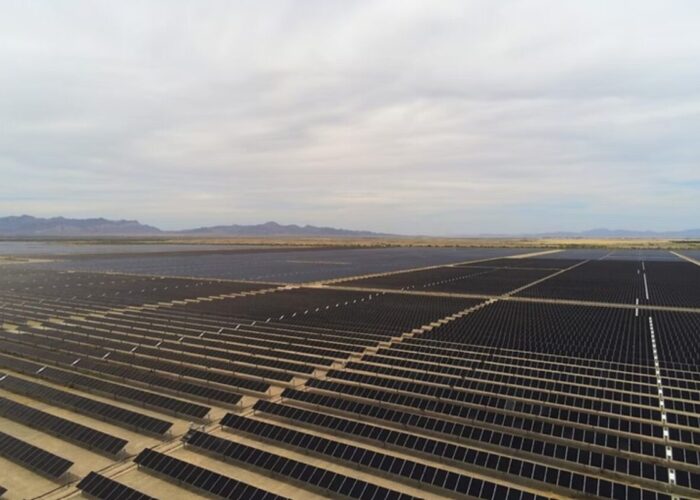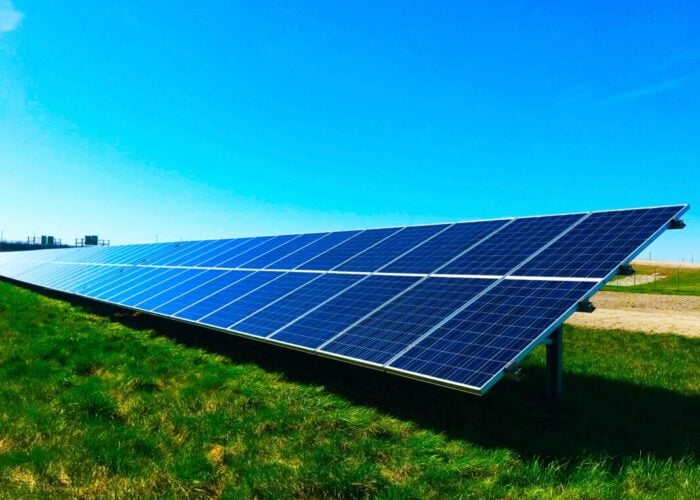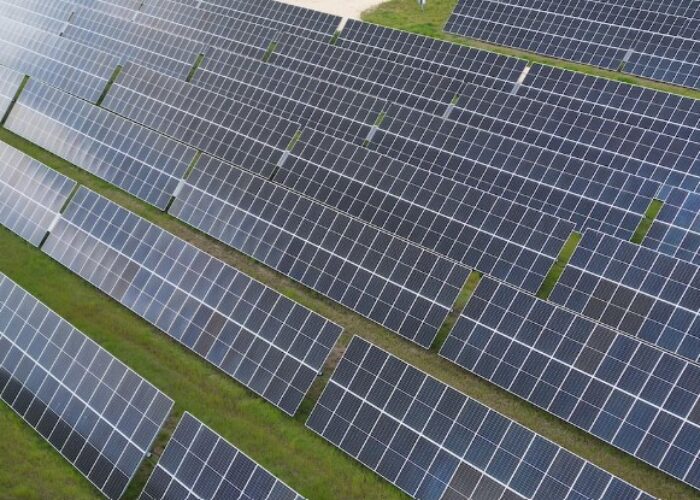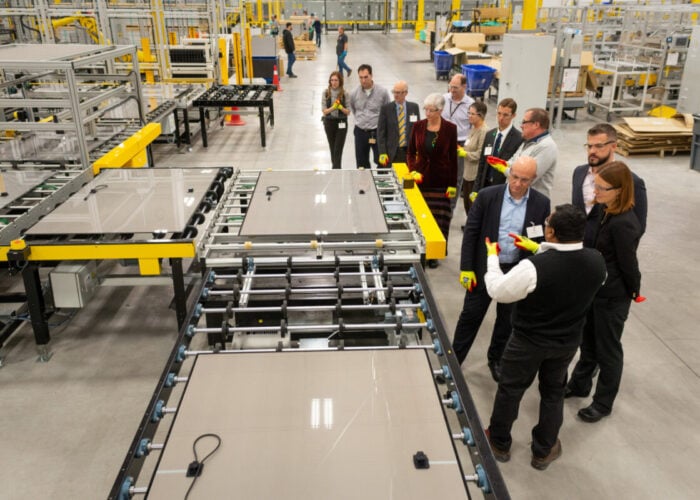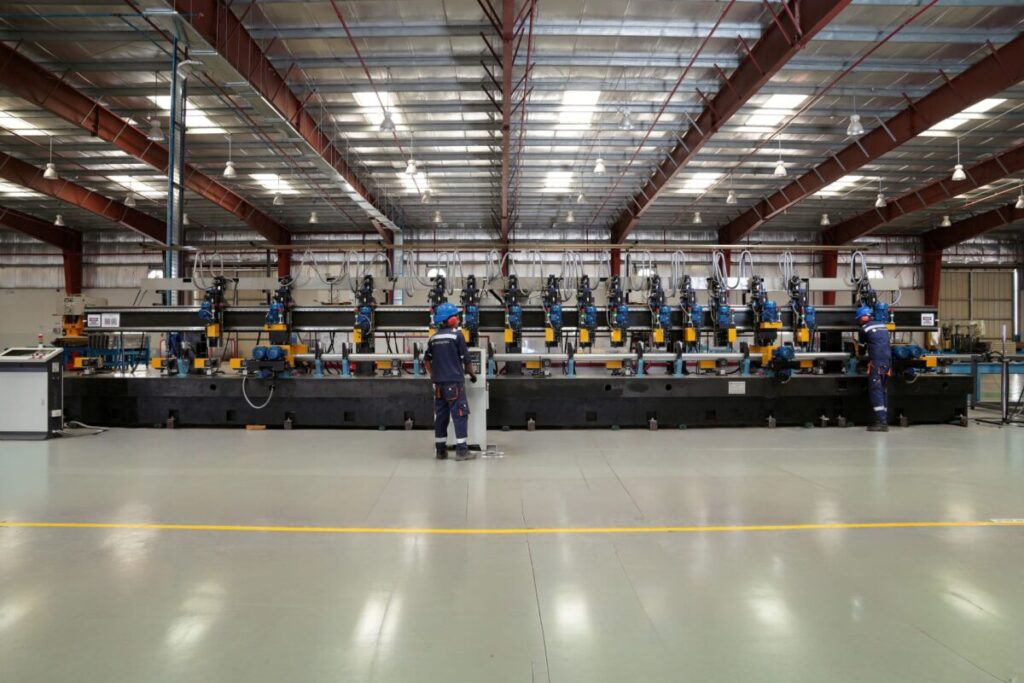
US solar tracker manufacturer Nextracker and Saudi-based energy company Abunayyan Holding have formed a joint venture (JV) in Saudi Arabia.
Through Nextracker Arabia, the new JV will locally manufacture and supply solar trackers and control systems for utility-scale solar and distributed projects across the country and the Middle East and North Africa (MENA) region.
Try Premium for just $1
- Full premium access for the first month at only $1
- Converts to an annual rate after 30 days unless cancelled
- Cancel anytime during the trial period
Premium Benefits
- Expert industry analysis and interviews
- Digital access to PV Tech Power journal
- Exclusive event discounts
Or get the full Premium subscription right away
Or continue reading this article for free
The JV is expected to begin its business during the first quarter of 2026. The establishment of a JV in Saudi Arabia comes at a time when tracker demand in the country has been on the rise over the last year.
Indeed, Saudi Arabia, along with India, drove the growth of tracker demand in 2024. Last year, the countries collectively installed 28GW out of the 111GW of new tracker capacity added globally, which represented more than the entirety of Europe, according to Wood Mackenzie. In terms of companies, Nextracker ranked first last year and accounted for 26% of the global market share with 28.5GW of shipments.
Dan Shugar, founder and CEO at Nextracker, said: “With this new joint venture and initial manufacturing facility, we will build a strong local supply chain that brings production closer to our customers, enhances self-reliance and delivers the high performance and reliability that our customers value.”
Nextracker’s JV in Saudi Arabia and the manufacturing of local PV trackers follow the suit of other tracker companies such as GameChange Solar—which doubled the capacity of its Saudi Arabian plant this year— TrinaTracker and PV Hardware. Interest in building solar manufacturing capacity in Saudi Arabia and the broader region keeps growing, especially from Chinese PV companies (subscription required), which have announced plans to build capacity across the entire supply chain, from polysilicon to modules.
Most recently, Chinese solar firm SoleFiori signed an agreement with the Saudi government to build a heterojunction module assembly plant in the country with a 6GW annual nameplate capacity.
Nextracker raises fiscal year guidance amidst revenue growth
On the same day Nextracker unveiled a JV in Saudi Arabia, the company published the financial results for the period between July and September—Q3 in the calendar year and Q2 for the company’s 2026 fiscal year, which starts in April.
Revenues during Q3 reached US$905 million, a 42% increase from the same period a year ago, when the company registered a revenue of US$636 million.
The majority of the revenue generated was in the US, which represented 76% of the total revenue, US$687 million. This also represents Nextracker’s highest revenue from the US in any given quarter, as shown in the chart below.
Even though revenue from the rest of the world decreased for the second quarter in a row, the company achieved record bookings in Europe between July and September 2025.
Moreover, the company’s adjusted earnings before interest, taxes, depreciation and amortisation (EBITDA) reached US$224 million in Q3 2025, up from US$173 million in Q3 2024.
For the first half of Nextracker’s fiscal year, the revenue is up by 31% year-over-year with US$1.77 billion, which set a record first half, according to the company.
“Nextracker delivered another strong quarter with robust financial performance amid accelerating global demand for our technology,” said Shugar, adding: “Bookings for our tracker products remain healthy, leading to a record backlog of greater than US$5 billion.”
Furthermore, the company revised its guidance for the fiscal year and increased both its revenue and adjusted EBITDA. The new guidance for FY26 revenues is between US$3.275 and US$3.475 billion, up from US$3.2 and US$3.45 billion, while the adjusted EBITDA has increased from US$750-810 million to US$775-815 million.
According to the company, the new guidance “assumes the current US policy environment remains intact, and in addition, that permitting processes and timelines will remain consistent with historical levels.”
Nextracker’s revenue growth this quarter has also been accompanied by the acquisition of steel frame manufacturer Origami Solar for US$53 million last month, and it already signed a supply agreement with US manufacturer T1 Energy earlier this month.
The acquisition of Origami Solar is the latest one from Nextracker, which has been diversifying its portfolio in the past few years with acquisitions in the foundations market—with Solar Pile International and Ojjo—last year and in robotics and artificial intelligence technologies last quarter.
Furthermore, the company launched a new electrical balance of systems (eBOS) trunk connector in September, the first Nextracker eBOS product since the company’s acquisition of electrical infrastructure manufacturer Bentek Corporation in May of this year. Called NX PowerMerge, the new DC power component is aimed at streamlining eBOS installation and boosting long-term reliability.
PV Tech Premium spoke with Ryan Schofield, vice president of eBOS, and Yazan Aljani, senior director of sales for eBOS, about the launch of its eBOS product (subscription required) and how it aims to shake up the market with this first product launch, which helped boost bookings for eBOS during Q3 and reached Bentek’s highest bookings in the company’s history.



